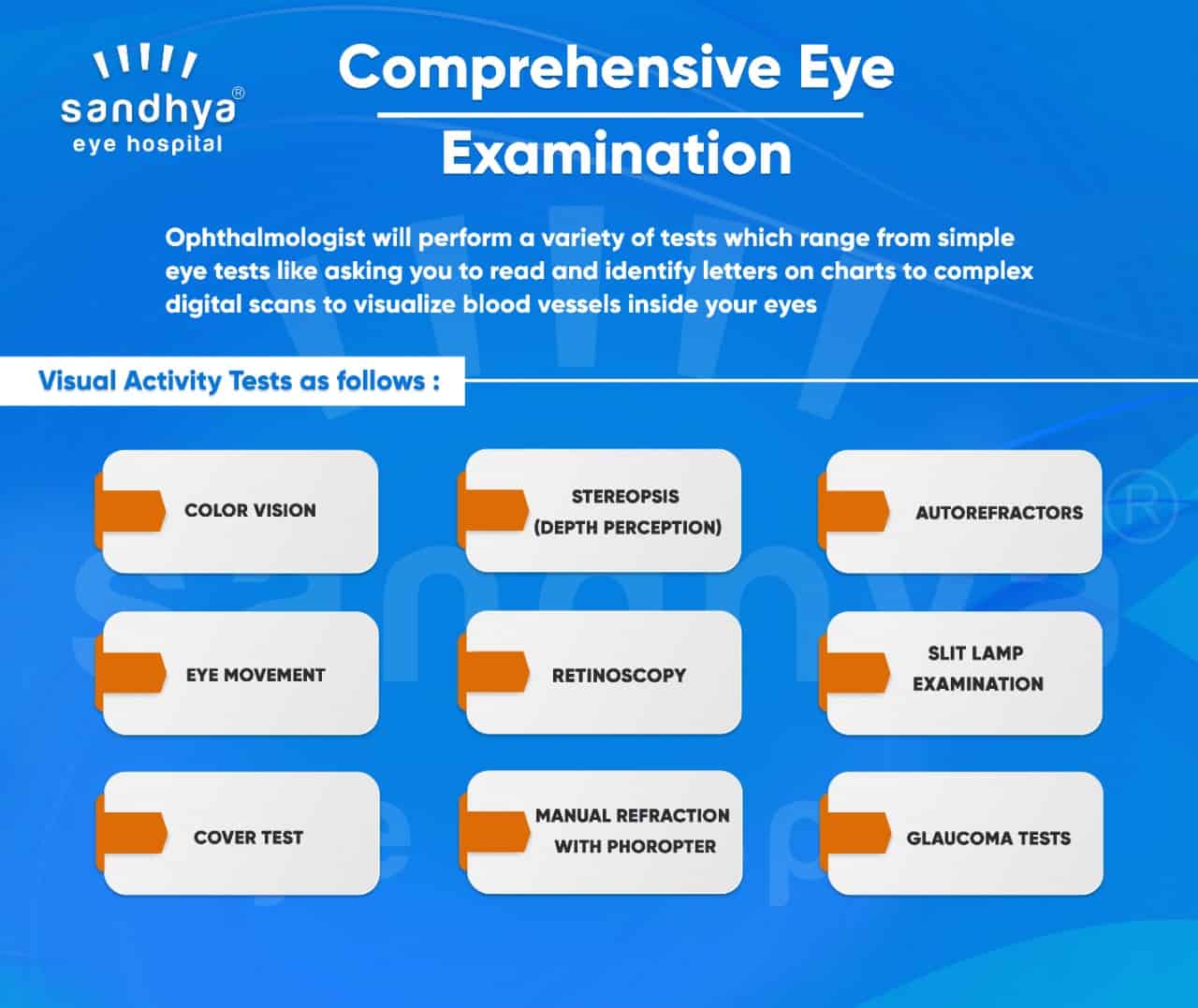Most people think an eye exam is very simple. You may believe that you have great vision because you had a screening test done before your driving license exam, or that your child’s vision is alright because their school does an annual eye checkup. It is easy to overlook the fact that such screenings are done to rule out major problems in the eye and only test whether you can read the signs on the road, or if your child can read what is written on the blackboard. Only a comprehensive eye examination done by a qualified eye doctor (ophthalmologist) can uncover pathologies (diseases) hidden in your eyes including glaucoma or even eye cancer.
During a comprehensive eye examination — which could last an hour or sometimes longer — the ophthalmologist will perform a variety of tests which range from simple eye tests like asking you to read and identify letters on charts to complex digital scans to visualize blood vessels inside your eyes.

A comprehensive eye examination includes:
Visual Activity Tests:
One of the initial tests done in the examination. It is done to evaluate the sharpness of your eyes using two charts, one of which is projected to test your distant vision and a handheld chart to assess your near vision.
Color Vision:
Using various charts developed over the years, your doctor will assess your ability to differentiate colors. This helps the doctor uncover any hereditary color blindness and also helps the doctor in making sure no other pathology — which can develop later in life and cause color blindness — is affecting your eyes.
Eye movement:
The doctors will assess your ability to follow slow movements and fast movements to see if you have any problems in your eye movements. Problems in eye movements can cause headaches, blurry vision and even double vision!
Cover test:
The doctor will ask you to focus on a distant fixed object and alternatively cover your eyes. This test will help the doctor in finding out whether your eyes need to move to fix on the eye when the other eye is covered. Thus this test helps the doctor diagnose whether you have a lazy eye or squint even in a minor form.
Stereopsis (Depth Perception):
Stereopsis is the ability of your eyes to co-ordinate and visualize the depth of your surroundings. The doctor will provide you with 3D glasses and ask you to read a pattern of circles and identify which of them is the closest to you.
Retinoscopy:
In this test the doctor will sit at arm’s length from you, dim the lights in the room and shine a light into your eyes from a hand-held torch like instrument. This test gives the doctor valuable information about the shape of your cornea, whether you have a cataract, and even help approximate your prescription for spectacles.
Manual refraction with phoropter:
In this test the doctor will place an instrument called Phoropter in front of your eyes and ask you to read a chart while constantly providing you various lens choices. Depending on your answers he/she will finetune the power and provide you with the clearest vision possible! This test helps determine the prescription of your spectacles. It helps correct far sightedness, short sightedness and astigmatism (a condition which occurs when your cornea is curved differently in different axis).
Autorefractors :
Your doctor can use this instrument to help accurately pinpoint the error of refraction in your eyes and help prescribe accurately powered spectacles. In this test your head is supported by a chin-rest and the instrument displays an image to you. The instrument is very efficient and determines the power of the lens required to focus light accurately on the retina (the back of the eye where perception of visual image takes place).
Slit Lamp Examination:
A slit lamp examination is basically a microscope which your ophthalmologist uses to take a closer look of your eyes. It provides high magnification. With your head supported with a chin-rest the doctor will take a look at your eyelids, cornea, iris and even the back of your eye such as the retina and the optic nerve. A powerful tool in the arsenal of the ophthalmologist, it helps diagnose many a condition like cataracts, diabetic changes and any ulcers.
Glaucoma Tests:
Using the slit lamp, your doctor will gently probe your eye to measure the pressure in your eye. Do not worry as he will give a numbing agent and you will hardly feel a scratch. As glaucoma is one of the leading causes of painless loss of vision, this test is of paramount importance.

